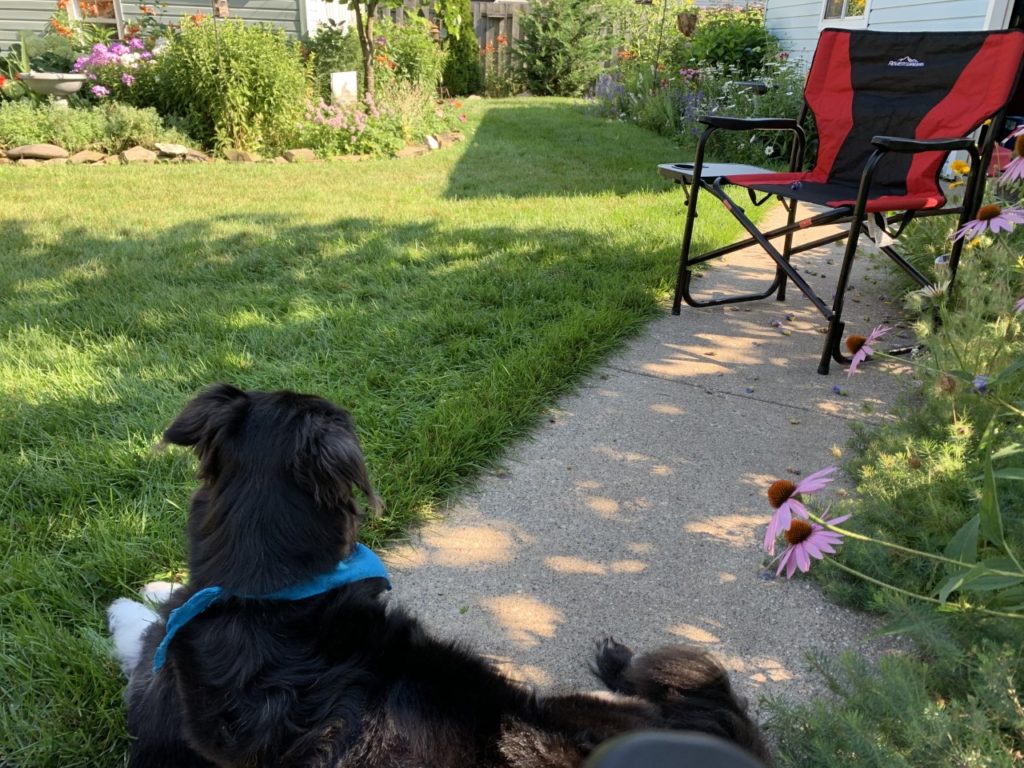A sustainably managed lawn is pet and people friendly
Our own Lisa Denison loves all things natural, which led her to launch a consulting service in sustainable practices. She’s also a big fan of local businesses. You can learn more at www.flowercoach.com. Here she interviews Steve Veldheer of Good Sweet Earth, an organic yard care company.
Lisa: Steve, you’ve been caring for my lawn and garden now for three years. How did you get started?
Steve: My wife Corey and I started as a vermicomposting (composting with worms) company in 2012. We now produce thousands of pounds of worm compost and a microbial drench for lawns and gardens called worm tea. Later we expanded into helping homeowners, gardeners, and small farms create healthier soil with organic fertilization.
Lisa: Can a lawn be environmentally responsible and decent looking? Any tips?
Steve: The answer is yes. First, use the highest setting on your mower to grow a thicker, healthier turf. Short grass has short roots. Shallow roots struggle to find water. So, in hot dry midsummer your lawn’s going to look terrible.
Second, leave grass clippings and mulched leaves to feed the soil. Clippings provide organic matter and nutrients. Bagged clippings remove God’s free fertilizer.
Lisa: What’s the right way to water a lawn?
Steve: Michigan has cool weather turf, which is naturally green in spring and fall. In summer heat it’s supposed to go dormant and get brown. If you’re comfortable with that, don’t water, and it’ll get the rest and carbohydrates it needs for a vibrant fall.
If you don’t want to have crispy brown grass in July and August, water just enough to keep it green. Here’s the key: Water less frequently, but longer. Instead of 15 minutes every day, water 45 to 60 minutes once or twice a week and only when the turf looks too crispy—but water deeply. Water deep in the soil forces the roots to go deep. Soil with a lot of organic matter retains water, and lawns stay greener longer, even at higher temperatures.
Lisa: Is aerating a lawn necessary?
Steve: Definitely aerate in the fall if your soil seems compacted and grass is having difficulty growing. Aeration is all about getting air into the soil. Healthy soil is 25 percent air! That being said, aeration has only been around since the advent of chemical fertilizers and herbicides. Chemicals kill the life in your soil—fungi, bacteria, worms and beetles—all the natural systems that convert plant matter into compost. If you’ve got life in your soil and a steady supply of organic material, those little critters will be active and aerate the soil for you.
Lisa: So what does my lawn need this fall?
Steve: Fall is a great time to get ready for next year. The two most important things are overseeding and putting down organic fertilizer or compost. Overseeding thickens turf; filling in gaps denies weeds the opportunity to grow. Organic fertilizer or compost will add organic matter; soil won’t be able to hold nutrients or water without it.
Lisa: You mentioned leaves earlier. Any time-saving advice?
Steve: Definitely mulch mow those leaves! That’s free fertilizer. If you have a lot of leaves, you may want to rake some up before mulching—you don’t want to smother the turf. Those tiny leaf particles do three things: turn into compost for the soil, release nutrients, and serve as somewhat of a blanket for your grass to protect it over the harsh winter. [Lisa adds that mulched leaves also make good mulch for your flower garden.]

